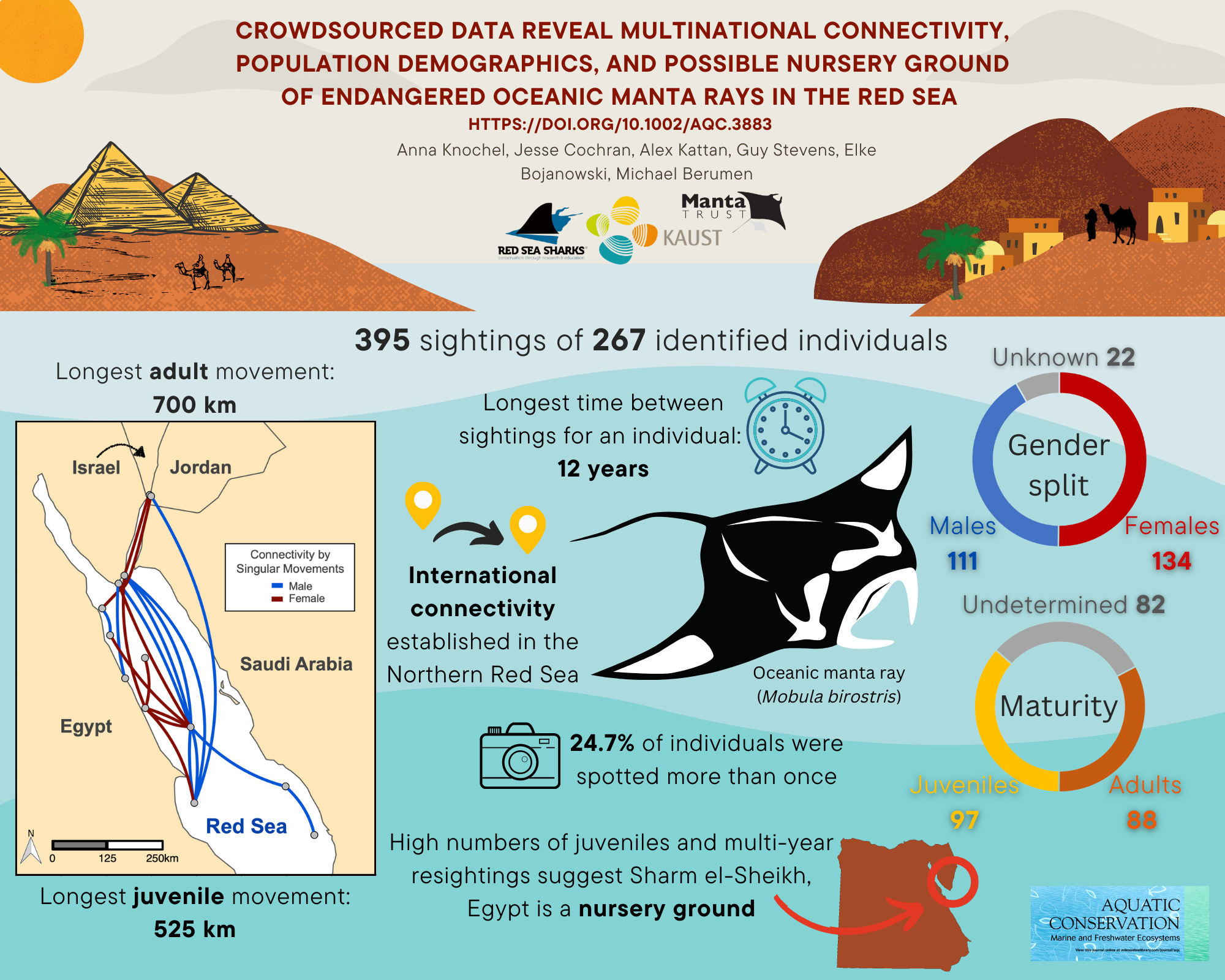Crowdsourced data reveal multinational connectivity, population demographics, and possible nursery ground of endangered oceanic manta rays in the Red Sea
September 2022
Anna M. Knochel, Jesse E. M. Cochran, Alexander Kattan, Guy M. W. Stevens, Elke Bojanowksi & Michael L. Berumen
Keywords: Coastal • Distribution • Egypt • Endangered Species • Fish • Marine Megafauna • Ocean • Photo-ID
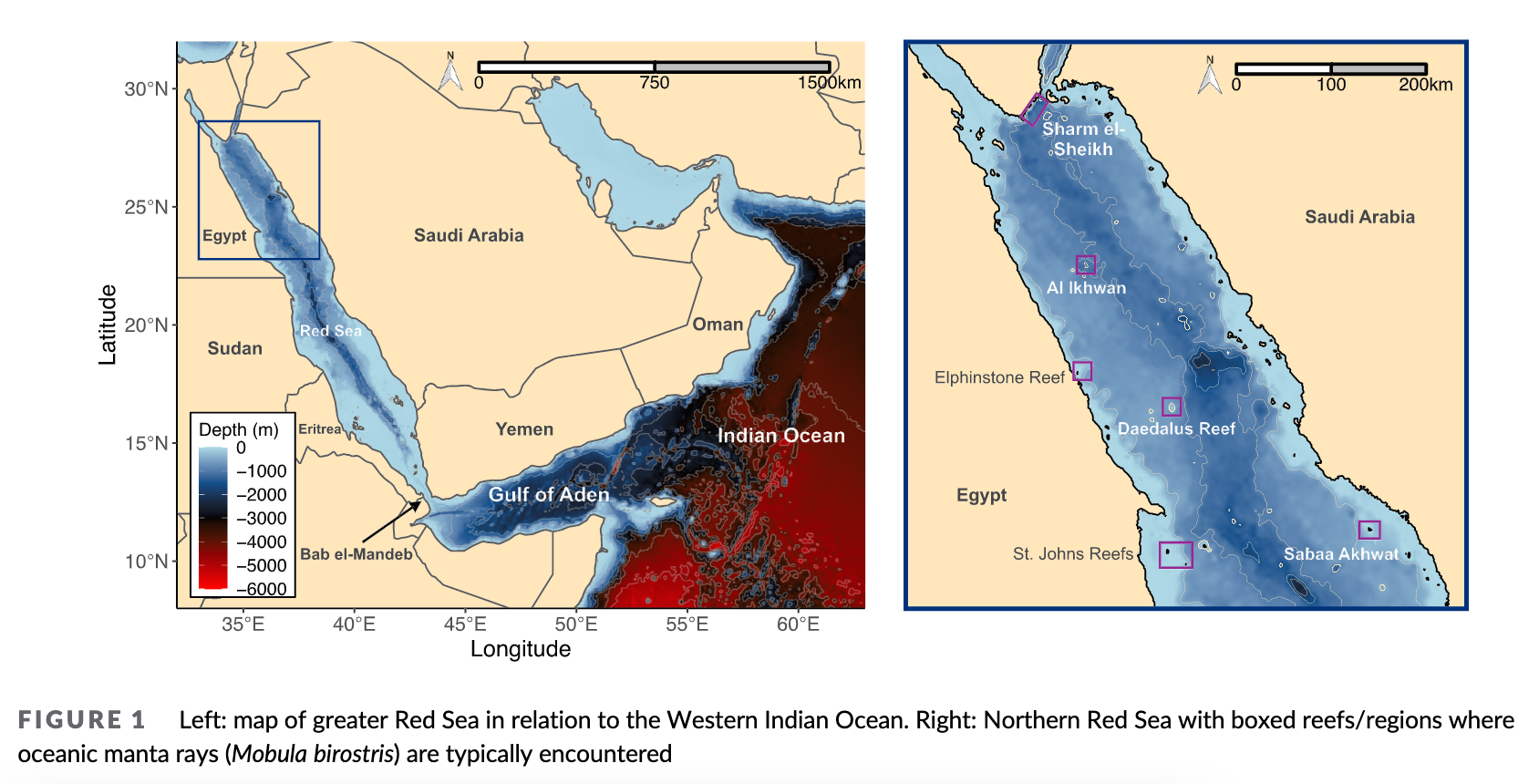
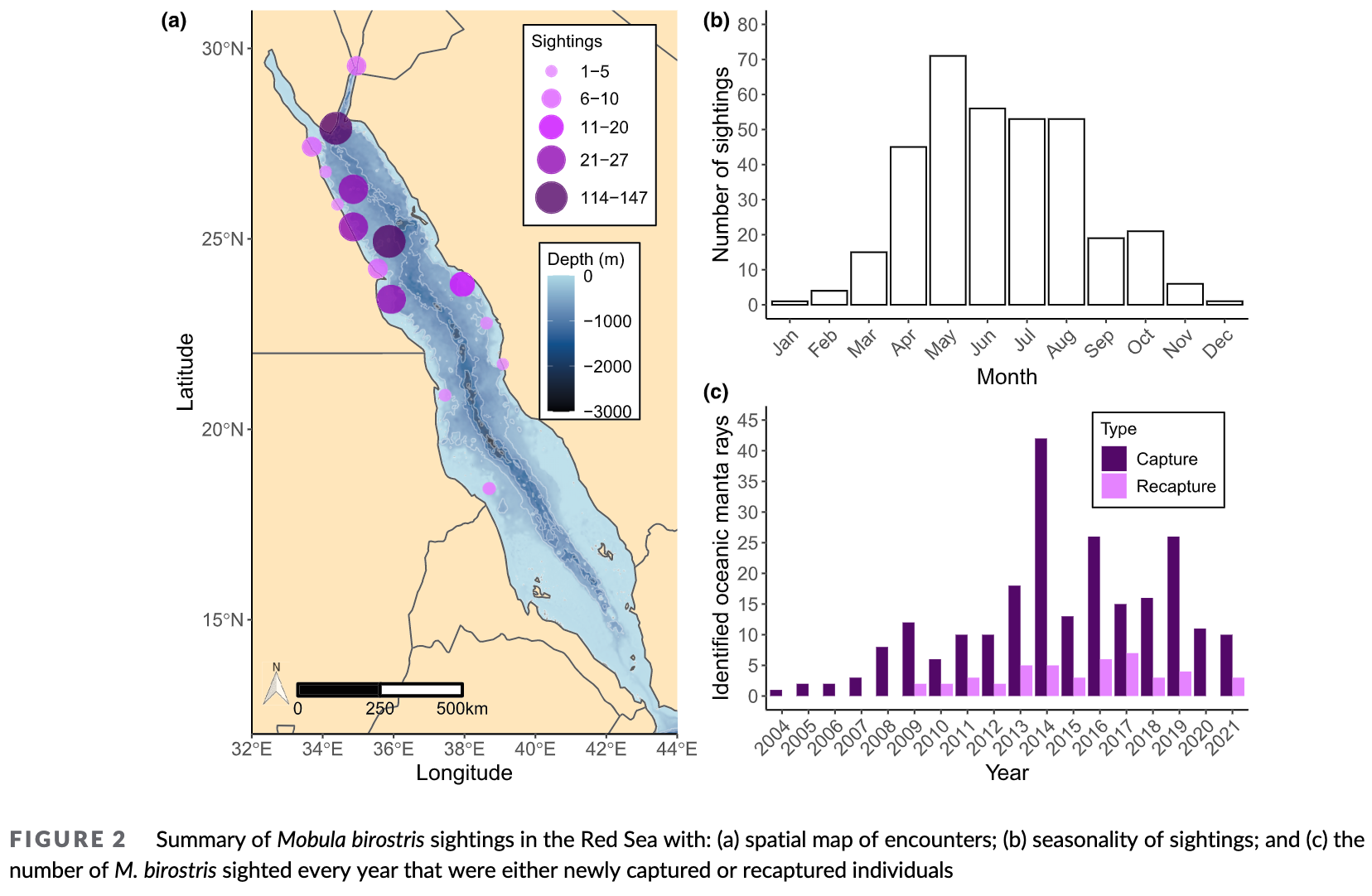
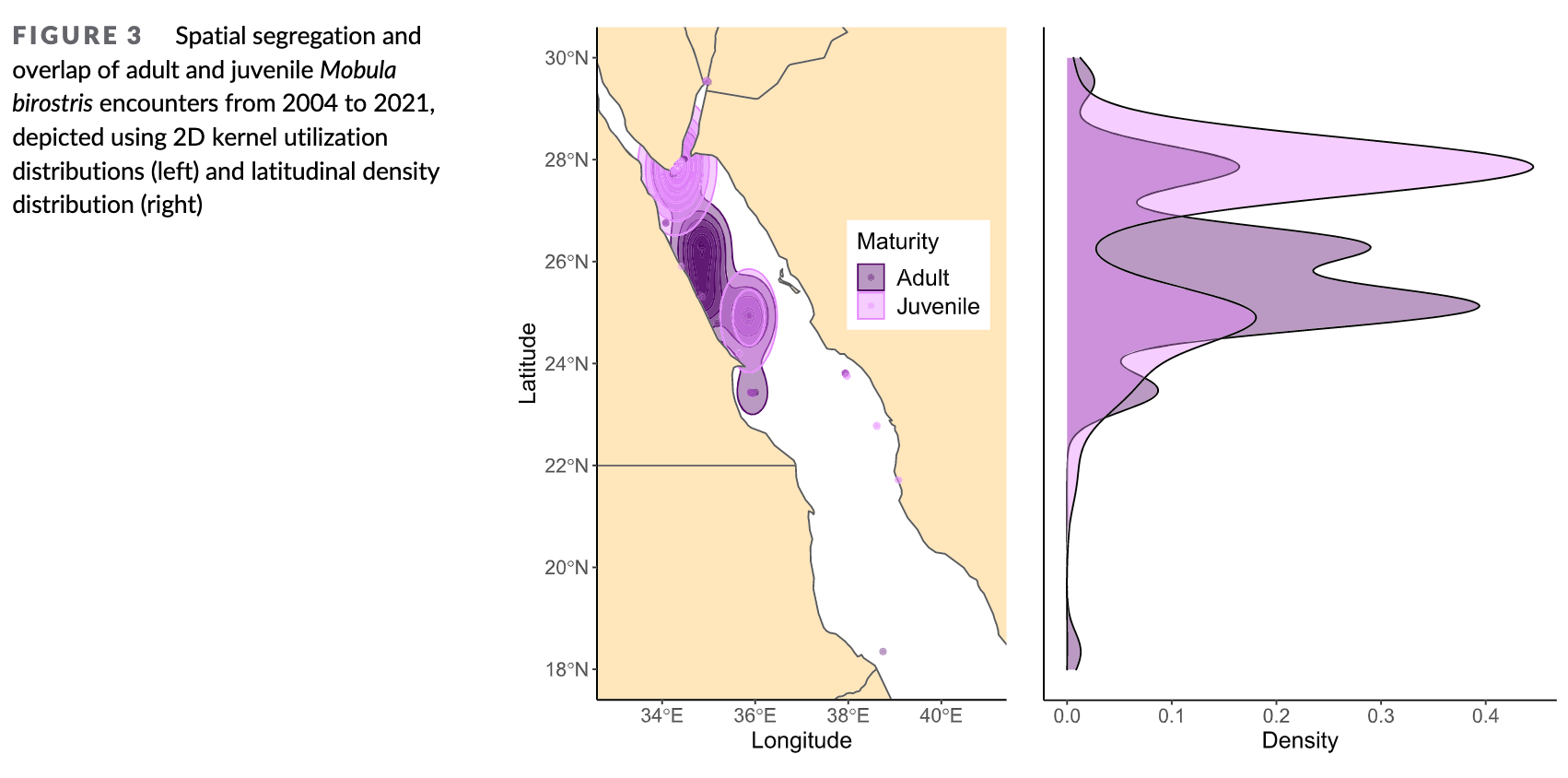
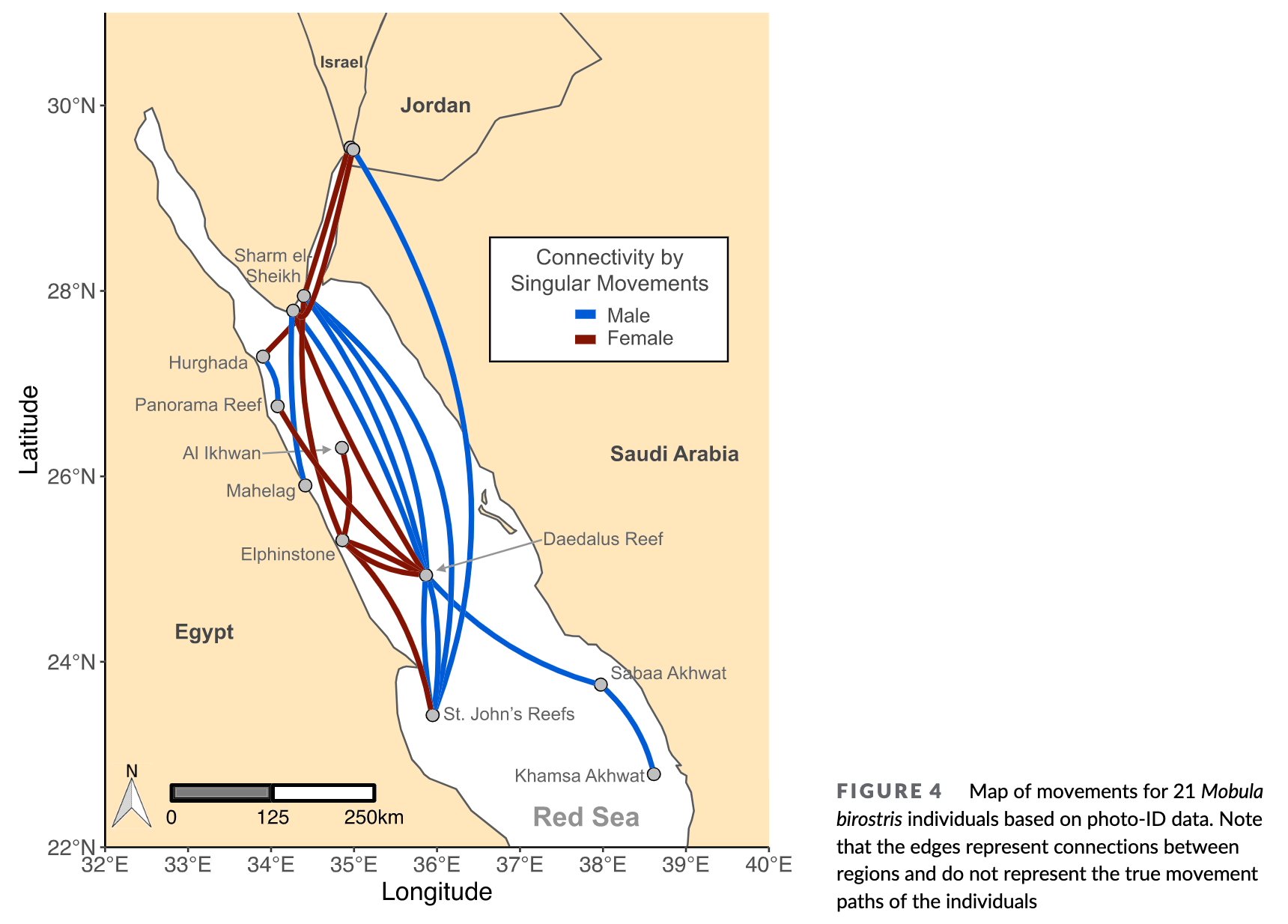

Summary: This study describes the movement patterns and population demographics of oceanic manta rays in the northern Red Sea using photo-identification. 267 individual manta rays were identified through social media searches and encounter data revealed long-distance migrations of up to 700 km. The presence of juveniles in Sharm el-Sheikh indicates a potential nursery, and increased knowledge of movement patterns and site use is crucial for the protection of this endangered species in a region with high levels of shipping traffic, unregulated fisheries, and coastal development.
Abstract
“1. Despite the large size and economic value of the species, populations of oceanic manta ray (Mobula birostris) are often poorly studied and almost completely undescribed in the Red Sea. Here, photo-identification (photo-ID) was used to provide the first description of M. birostris movement patterns and population demographics for the northern Red Sea.
2. Images collated from social media, researchers, and photo-ID databases from 2004 to 2021 identified 267 individual M. birostris from 395 sightings in Egypt, Israel, Jordan, Saudi Arabia, and Sudan. Sexual parity was observed in the population with 134 females, 111 males, and 22 individuals of undetermined sex. Nearly half of the individuals in this study were first identified through social media searches, highlighting the value of the sightings data collected by the public.
3. The regular presence of juveniles in Sharm el-Sheikh, Egypt, indicates that this area is a potential nursery, which is the second identified for this species globally and the first in the Indo-Pacific. Encounter data from this study recorded the first known movements of juvenile M. birostris and demonstrate that they can travel long distances of at least 525 km.
4. Within the recorded population, 24.7% (n = 67) of individuals were resighted, including 21 oceanic manta rays that were encountered in more than one location. These records reveal long-distance migrations of up to 700 km and confirm the international connectivity of M. birostris in the Red Sea. The lagged identification rate data are best fitted with an open-population model, implying that the northern Red Sea is represented by one well-mixed population.
5. The baseline data presented here should encourage the expansion of directed research and citizen science initiatives for M. birostris. Increased knowledge of movement patterns and site use will be crucial to successfully protecting this endangered species in a region characterized by high levels of shipping traffic, unregulated fisheries, and extensive coastal development.”
Infographics
Author Affiliations
Red Sea Research Center, Division of Biological and Environmental Science and Engineering, King Abdullah University of Science and Technology
The Manta Trust
Red Sea Sharks
Funded by
King Abdullah University of Science and Technology

